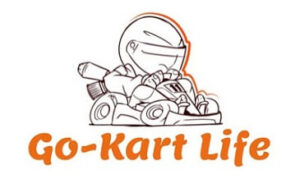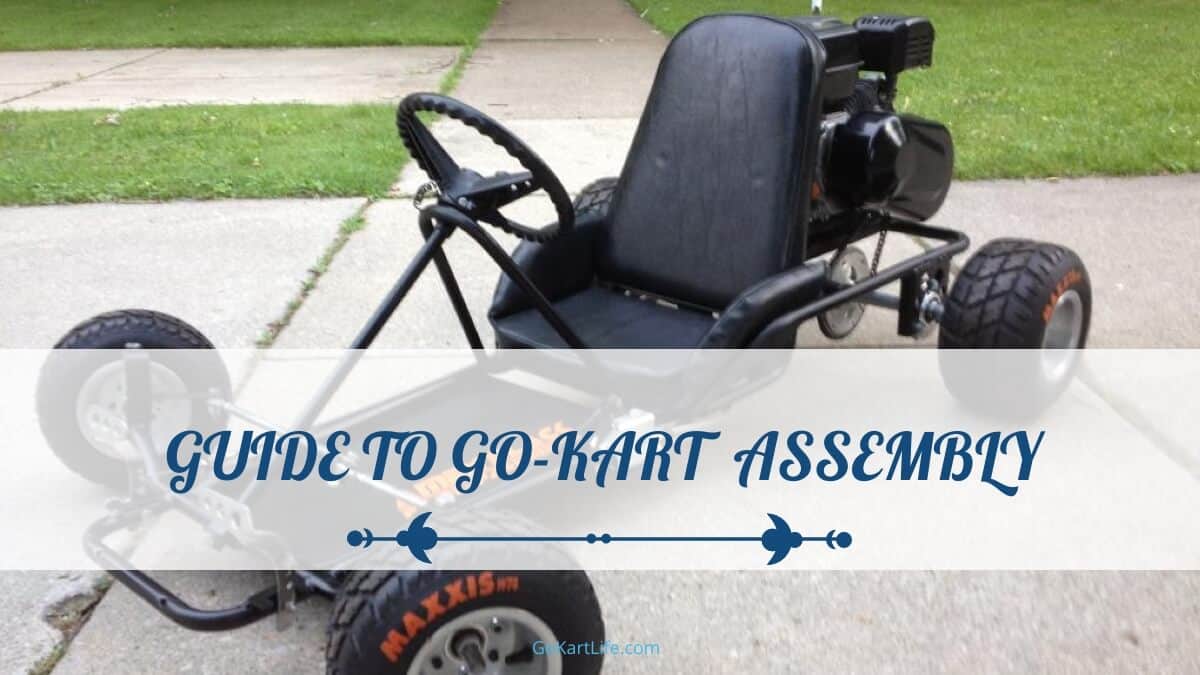Just about every go-kart enthusiast considers building their go-kart at some point. If you’re looking for more information about how to go about it and what exactly is involved in assembling a go-kart, then this guide is for you.
From simple, classic designs to state-of-the-art, innovative new models, go-karts are fun projects to build at home. They are also fun to drive and show off when you’re done.
Work on it alone to decompress after work, or get the kids involved for family bonding time. But, regardless of who builds it, the following steps will help you walk you through the process of assembling your very own go-kart.
Getting Started with Go-Kart Assembly
How you put together a go-kart is going to vary quite a bit. It depends on whether you’re assembling a kit, building your own from scratch, or doing something in between. Regardless of how you’re going about doing it, if you’re constructing a go-kart, make sure you:
- Have an appropriate place to work protected from the elements and available for a length of time. A garage is perfect.
- Have all the tools you’ll need ahead of time. Also, have the names of nearby auto shops that might be able to help with specific steps.
- Organize all your parts and label them with a paint pen, so you remember where they go.
Remember, the more organized and prepared you are ahead of time, the more smoothly everything will go.
How to Assemble a Go-Kart
If you’re building a kart from a kit, make sure to follow the manufacturer’s instructions. Call the manufacturer if you have any questions. If you’re not building from a kit, read on to find out how to build a kart from scratch!
1. Plan Your Design
The first step of building anything is planning the project out. Look at other go-karts and make notes about what you do and don’t like about them. Talk to other kart owners, test drive a few if you can. Read online forums to get an idea of what generally works for others who build their karts.
Note: Knowing the experience of others who have gone through the process is invaluable. It can save you a lot of time and potential mistakes in the long run.
Once you have an idea in mind of what you want to build, decide whether it makes more sense to:
- Buy a go-kart kit and make modifications to it.
- Use an existing go-kart template, modifying if needed.
- Design your template and create a go-kart from scratch.
The above options are listed in the order from most straightforward and fastest to most difficult and time-consuming. Some of the questions you should ask yourself when deciding which route to take include:
- How much mechanical experience do you have?
- Do you have an appropriate workspace that will be available for as long as you need it?
- Do you have access to unique tools, like a welding machine?
- How much time do you have to devote to the project?
- How much of a hurry are you in to have the go-kart complete?
Identifying how much you’re willing to commit to the project is essential. You don’t want to make it harder for yourself than it needs to be by trying to do too much your first time building a kart. Remember, you can always take a more straightforward route on your first kart and progress to building from scratch once you get the hang of it, too.
Let’s take a closer look at the building options so you know what they entail, then move on to the building steps.
Modifying a Go-Kart Kit
Buying and assembling a kit is a good option for someone who has a decent mechanical experience level but lacks the time, tools, or space to design and build a kart from scratch. It’s still a fun project that will be rewarding when it’s finished, even without modifications.
However, if you do decide that you’d like modifications, you’re free to make them using the existing kit, which has a design that you already know is functional. This is a great way to test out different mods to see what works and what doesn’t, without committing to making every single part of the design yourself.
If you’re on the fence about building a kart, this might be the option to start with.
Modifying an Existing Template
Modifying an existing template can be an excellent way to build the go-kart of your dreams without worrying as much about your measurements being off or forgetting something important in the design.
Buy or print out a free existing design that’s as close to what you want as possible, and re-design the features you’d like to change.
This will involve more design flexibility than a kit while providing a solid structure to base your plans. Modifying an existing template is a good option for those who are pretty savvy when designing but who haven’t created and assembled a kart before.
Designing Your Template
If you have a lot of mechanical or engineering experience, you might enjoy the challenge of designing a go-kart template from scratch. Even when doing this, you can choose to incorporate an existing chassis to save you from having to weld one together from pieces of metal.
So if you want the fun of designing and building a kart from scratch but don’t have access to a welder, you might consider this.
It’s not uncommon for go-kart designers to build their design around whatever parts they have or can acquire cheaply. You might even want to start gathering pieces—or at least deciding which ones you’ll get—before drawing your design.
For example, say you go through the trouble of making a detailed diagram of your design. The only engine you’re able to get your hands on is twice as big as the one you’d planned for. In this case, you’re going to have to change the whole design to make it fit.
Of course, you can always hold out for parts that fit your plan. It’s just a matter of whether you’re willing to pay extra to get new pieces right away. You can also wait a little while to find the right used ones for your project and save a few bucks.
The designing step is arguably the most critical step in creating and assembling your kart. The wrong measurements or forgetting to consider something can completely ruin the kart.
2. Make a Jig
Once you’ve solidified the type of go-kart and building method you want to use, next, it’s time to make a jig.
Making a jig can help with your kart design’s final planning stages since it gives you a visual idea of how everything fits together. This can shine a light on potential problems with the 2D template.
To make a jig, trace the kart frame into a sheet of plywood and place everything where you think they should go:
- The wheels
- Engine
- Seat (including the driver)
- Pedals
If you’re building in your garage, using chalk on the cement floor works fine as a jig as well.
It will be a lot easier to adjust things at this stage than it will be later. So even if you’re confident in your measurements, don’t skip this step.
3. Build the Chassis and Frame
The chassis is the skeleton of the kart, onto which everything else is built. The frame is the outer part of the chassis that keeps it structurally supported; it can be relatively simple or a bit more complicated if you want to add roll bars.
Since go-karts generally don’t have suspension, the chassis must be flexible enough to handle rough terrain and sharp turns without tipping over but also rigid enough to hold the kart’s shape.
Building the chassis and frame may require:
- Welding machine (Don’t have it? No problem, read how to build go-kart without welder)
- Metal tube bender
- Hack saw, or chop saw
- Bench grinder
Next to planning, welding the chassis is the step that is most likely to make or break your kart building success since it’s what holds everything else together.
Welding the frame is also a step that requires the most specialized tools, and ideally, the right amount of welding experience.
Note: Building a go-kart is not the best way to teach yourself to weld since a poor welding job can be a safety issue if the frame isn’t constructed solidly. So, if needed, take your structure to a welding shop so an experienced welder can help you.
4. Perfect the Steering System
A go-kart that doesn’t steer well is no fun to drive and is potentially dangerous, so make sure to use extra care when working on the steering system.
In particular, the kingpin inclination needs to be precise if your steering system has kingpins since they’re the central steering pivot in specific steering systems.
To install your steering system using kits, you’ll need:
- Two front wheels
- Tie rod kit
- Spindle kit
- Steering column
- Steering wheel
The steering system takes the steering wheel’s action and transfers the energy down and out to the front tires, making them respond and turn as well. A responsive steering system is a must in any go-kart.
Although you certainly can fashion each part yourself if you have the time, experience, and the right tools, the steering system is one of the more complicated aspects of a go-kart, so most people choose to buy kits or repurpose an old system.
5. Hang the Rear Axle
Hanging the rear axle is one of the more manageable parts of the go-kart assembly. To do it, you’ll need:
- Axle
- Two rear wheels
- Axle hangers
- Sprocket
- A brake disc (if using disc brakes)
You’re essentially just bolting or welding the axle hangers onto the frame in this step, then attaching the wheels (and brake disc if using one).
It’s super important that everything is sturdy, though, since the rear axle and wheels will be bearing the brunt of the kart’s weight.
6. Install the Engine
You have plenty of options when it comes to kart engines. You can buy a go-kart engine new or used, but you also have the option of using other engines from a:
- Small car
- Riding lawnmower
- Motorcycle
- Generator
- Leaf blower
- Snowmobile
The type and size of the engine you want will naturally depend on what you’re using the kart for. If you’re looking to get into racing, you’ll want more power. If the kart is for kids or you’re just planning to tool around the homestead on it, you’ll do fine with a smaller one.
The engine will need to fit between the back wheels and the seat, so make sure to factor engine size into your design.
7. Place the Pedals
The pedals should be far enough forward that the driver’s legs are slightly bent, but they also need to be out of the way of the steering column (Source: BMI Karts).
Note: This is an excellent example of where the planning and jig stage is essential. Thinking these types of things through before everything’s cut and welded will prevent overlooking something basic, like making room for pedal placement in the design.
Around this stage, some builders decide whether they want to add a floorboard to prevent the driver’s feet from getting caught in any of the mechanical workings.
8. Install the Braking System
The steps involved with installing your brakes will vary depending on the type of braking system you choose:
- Scrub
- Band
- Drum
- Disc
All braking systems work by stopping the wheels from turning, which will, of course, stop the kart from moving.
Scrub and band brakes stop the wheels from turning using external pressure, leading to faster tire wear. They tend not to work as well when wet since they have less friction to work with, so you might avoid them if you live in a climate with a lot of rain.
Disc brakes are the most efficient but also the most expensive and difficult to fix. Drum brakes are durable and still work when wet since they apply pressure from the inside rather than out.
9. Fine-Tune Your Seat Position
Now that the kart has four wheels, steering and brake systems, and an engine, now is a good time to perfect the seat position.
The seat should be placed in a comfortable position for the primary driver, of course, but think about weight distribution as well. Place the seat near the middle if it’s a one-seater to prevent tipping over on sharp turns.
Note: This is another example of where testing on the jig would help. You’d be able to quickly tell if there was enough room for the seat once the engine was installed. Imagine how inconvenient it would be to get this far into the process, only to find that you miscalculated something. And now that the kart’s almost complete, you have no room for a seat!
10. Attach the Brake and Throttle Cables
As the names suggest, the brake and throttle cables attach to the brake and gas pedal, telling the kart to speed up or slow down.
One end of the throttle cable attaches to the gas pedal; it stretches under the kart’s frame back to the engine, where the other end attaches. The brake cable also runs under the kart and is connected to the brake system and the brake pedal.
Make sure to raise the kart off the ground, so its wheels are in the air when mounting the cables and test them to make sure they’re working the way they need to be.
11. Install Seat Belts
Once the seat or seats are firmly in place, don’t forget to install seat belts. No matter how well you build your kart or how good a driver you are, accidents happen, so seat belts are necessary.
Seat belt kits are super easy to install, essentially just bolting into the frame. There are a few styles to choose from, depending on your needs:
- Two-point style: lap belt
- Three-point style: over one shoulder, like a car seat belt
- Four-point style: harness for more protection, great for racers and off-roading
Although it’s recommended to repurpose items like engines, the seat belt isn’t one of the things you want to buy used, since you don’t know its accident history, and it can only be guaranteed to be in perfect condition if it’s new.
Final Thoughts
The process of assembling a go-kart can be just as enjoyable as riding in the kart if the building is a hobby of yours. Plus, it ups the enjoyment of driving the kart later since there’s nothing quite like zipping along in a kart you put together yourself.
The keys to building your kart are research and planning to ensure that your template is as perfect as possible before you begin building. Remember to take advantage of the strong go-kart community out there, who can give advice in-person or through online forums.

Goran, an experienced go-kart racer, fuels GoKartLife.com with his passion and expertise. He offers valuable insights and tips for fellow enthusiasts, fostering the growth of the go-kart community. Join Goran at GoKartLife.com and immerse yourself in this exhilarating sport.

